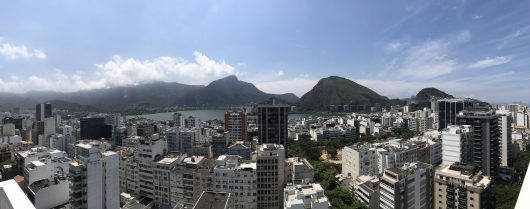10 Important Facts about Poverty in Brazil

Brazil’s learning initiatives focus on ending poverty at both the national and international levels. However, the Brazilian economic boom of the last decade seems to have concluded with millions returning to poverty. The following 10 facts about poverty in Brazil provide insight on the country’s current poverty threshold, political state, budget cuts and programs created to combat poverty.
Facts about Poverty in Brazil
- Brazil’s poverty line is set at 140 Brazilian reais per month, which roughly converts to $44 at the current exchange rate. Brazilians making less than $528 per year are considered to be in poverty.
- According to the World Bank, 28.6 million Brazilians emerged from poverty between 2004 and 2014. The World Bank further estimates that, from the start of 2016 to the end of this year, 2.5 million to 3.6 million Brazilians have fallen below the poverty line.
- Several cuts in social services, such as Bolsa Familia, have occurred under President Michel Temer. Bolsa Familia is Brazil’s family allowance program that provides monthly subsidies to qualifying low-income people. Non-labor income, such as Bolsa Familia, is responsible for the nearly 60 percent reduction of people living in poverty. Although increased unemployment pushes more citizens toward the program, fewer people are actually qualifying for coverage. Bolsa Familia’s decline in coverage may correlate with the recent crackdown on fraud, as Temer’s administration found discrepancies regarding 1.1 million recipients.
- Former President Luiz Inacio Lula da Silva has been under investigation regarding corruption allegations. Da Silva is appealing a conviction regarding a 10-year sentence for corruption, but he continues to lead preference polls for next year’s presidential election. His campaign promises to refocus on the poor and return to better economic times.
- After hosting the 2016 Summer Olympics, Rio de Janeiro has suffered extreme economic unrest. The city struggles to pay thousands of public workers, with many receiving wages in late installments. Further items that have been reduced from the budget include garbage collection and a community policing program.
- Brazil’s learning initiative World Without Poverty (WWP), or Mundo Sem Pobreza, educates the world on social protection policies and initiatives to fight poverty. Brazil’s innovative solutions have been documented for international access since 2014 and WWP continues to compile the best practices used by other countries to improve global social protection systems.
- The Food Purchase Program, PAA, encourages family farming and increases food availability. The program increases regional and local marketing networks, promotes purchasing of foodstuffs by government, endorses biodiversity and organic food production, supports cooperatives and associations and encourages healthy eating habits.
- Cisterns Program, or Programa Cisternas, is a national program to support rainwater harvesting and other social technologies for accessing water. It is a part of the Water For All program where concrete cisterns are built for water storage. Stored water is consumed by households, business facilities and rural schools in the semi-arid region.
- Brazil’s semi-arid region frequently suffers droughts. The Cisterns Program’s initial goal was to install one million cisterns for domestic use, which was achieved in 2014 and has since been surpassed. Although the region has experienced a harsh drought since 2012, negative effects, such as child mortality, mass migration and starvation, are no longer widespread.
- 43 percent of children under five (almost 250 million) in low and middle-income countries face severe developmental issues due to hunger, malnutrition and violence. The Lancet launched “Advancing Early Childhood Development: from Science to Scale” in Brazil. This study focuses on child development from birth to three years of age, emphasizing the importance of proper care during this critical period. Insufficient care can result in poor academic performance, chronic diseases and other developmental issues.
According to Fox News, the average American spends approximately $1,100 per year, more than double Brazil’s poverty threshold, on coffee. A simple conclusion can be reached from these 10 facts about poverty in Brazil: if every American cut their coffee budget in half, they could help eradicate poverty in Brazil.
– Carolyn Gibson
Photo: Flickr
